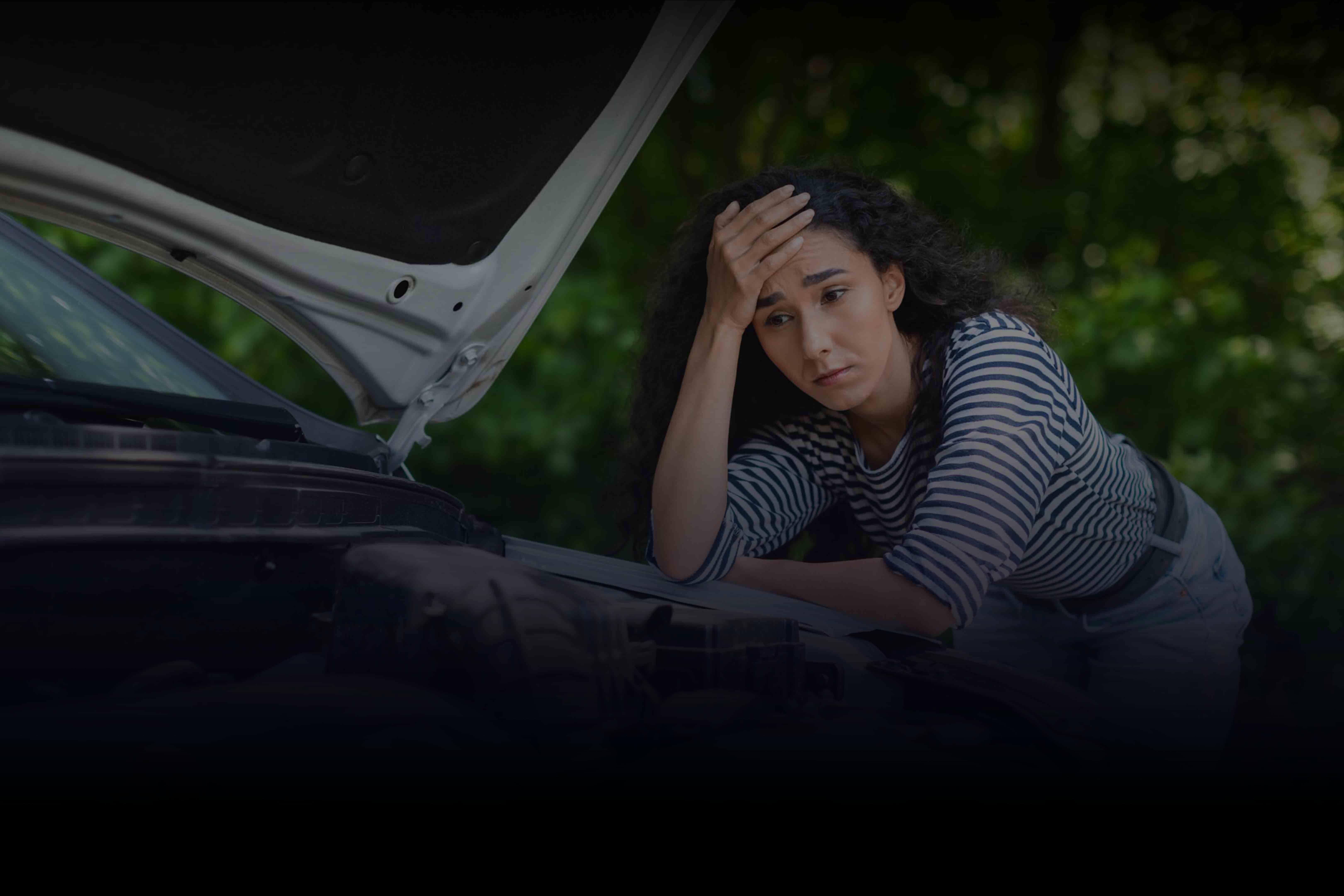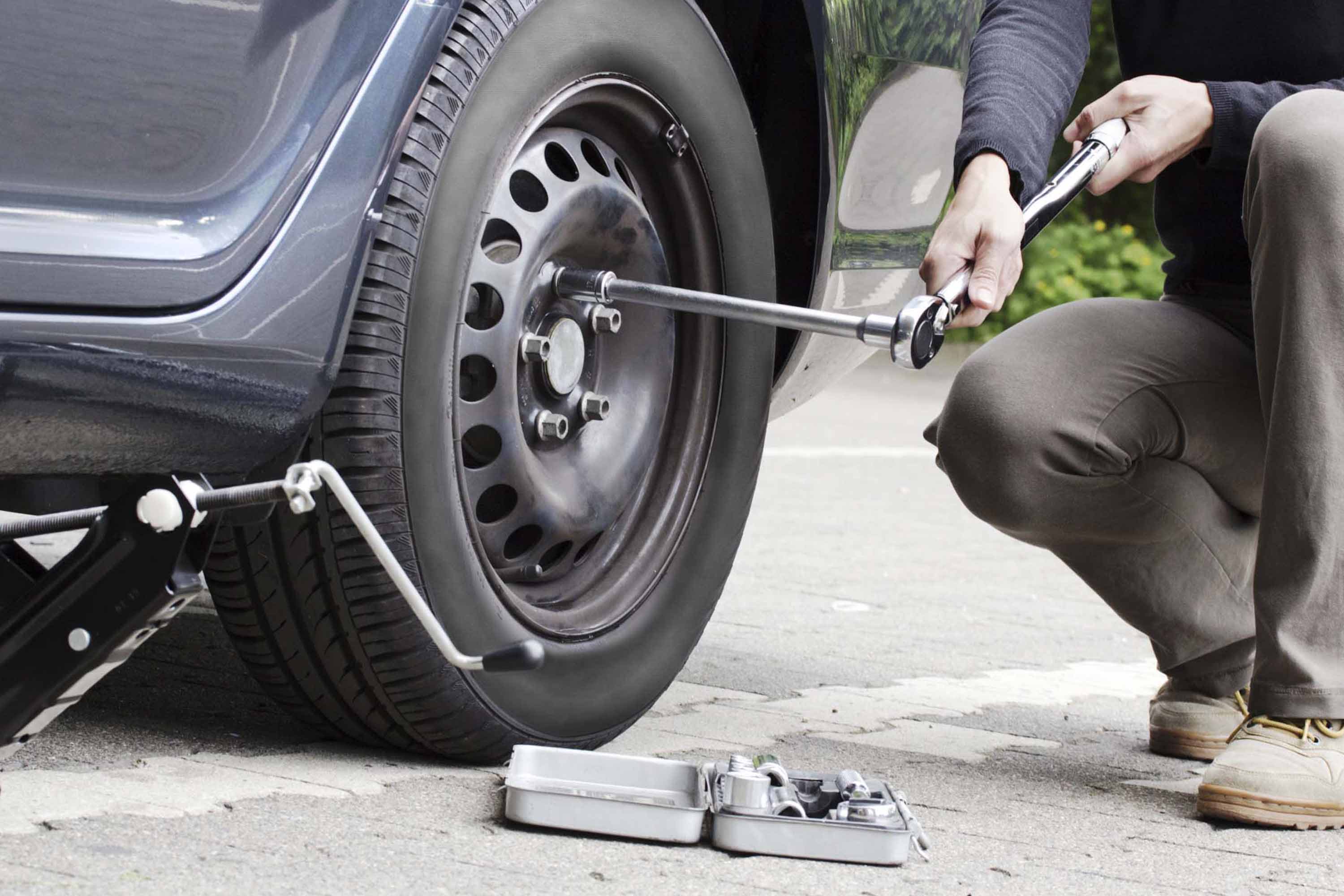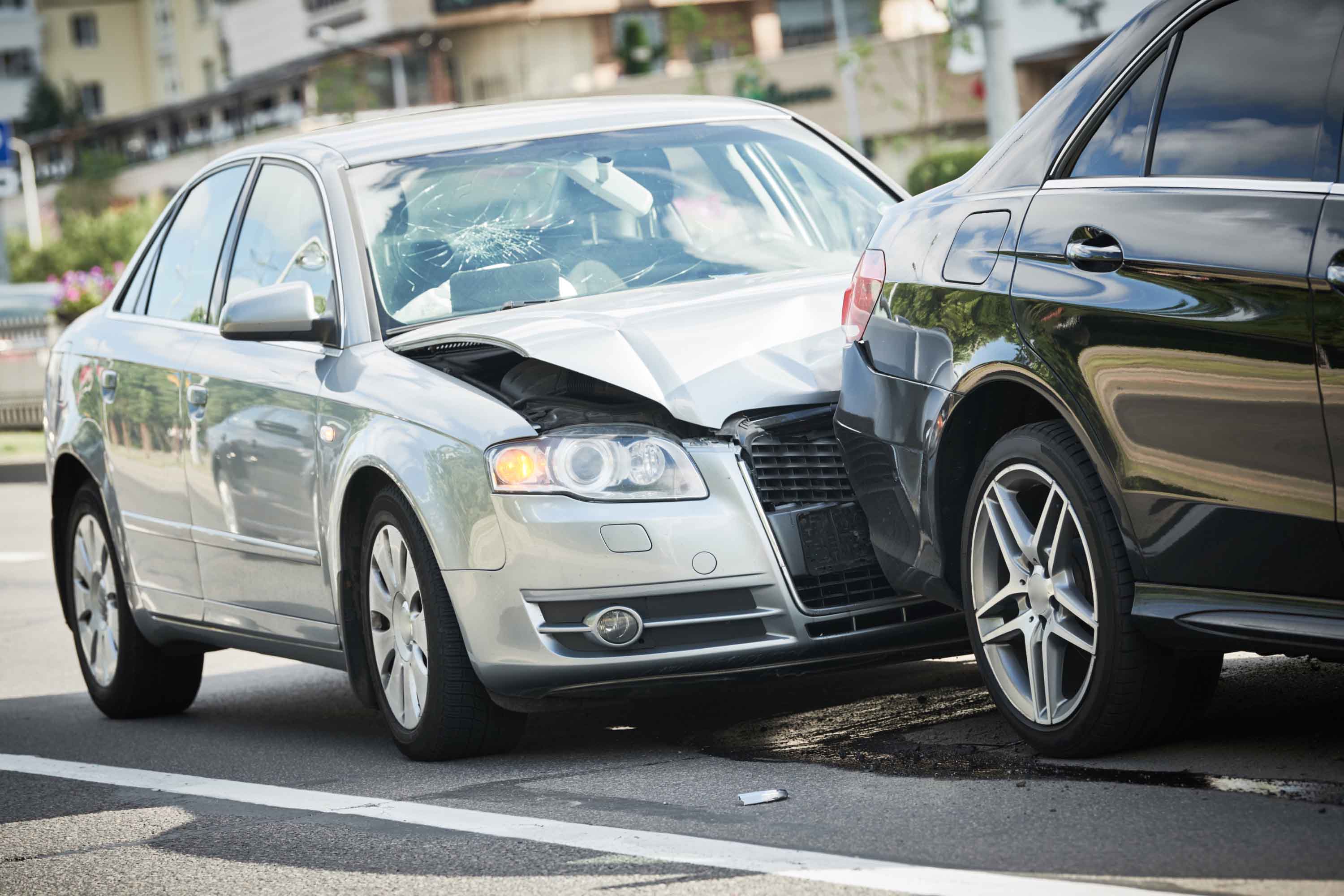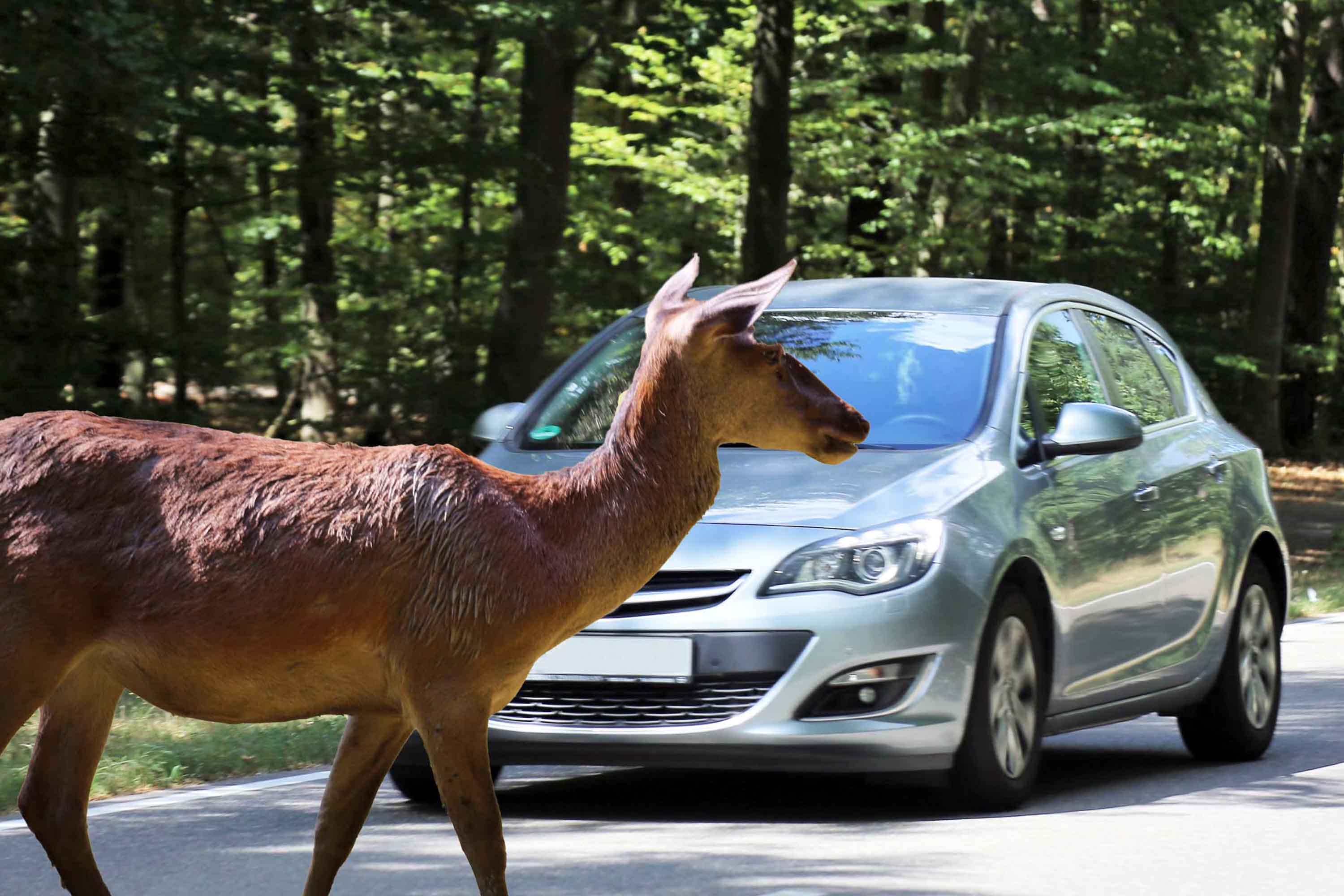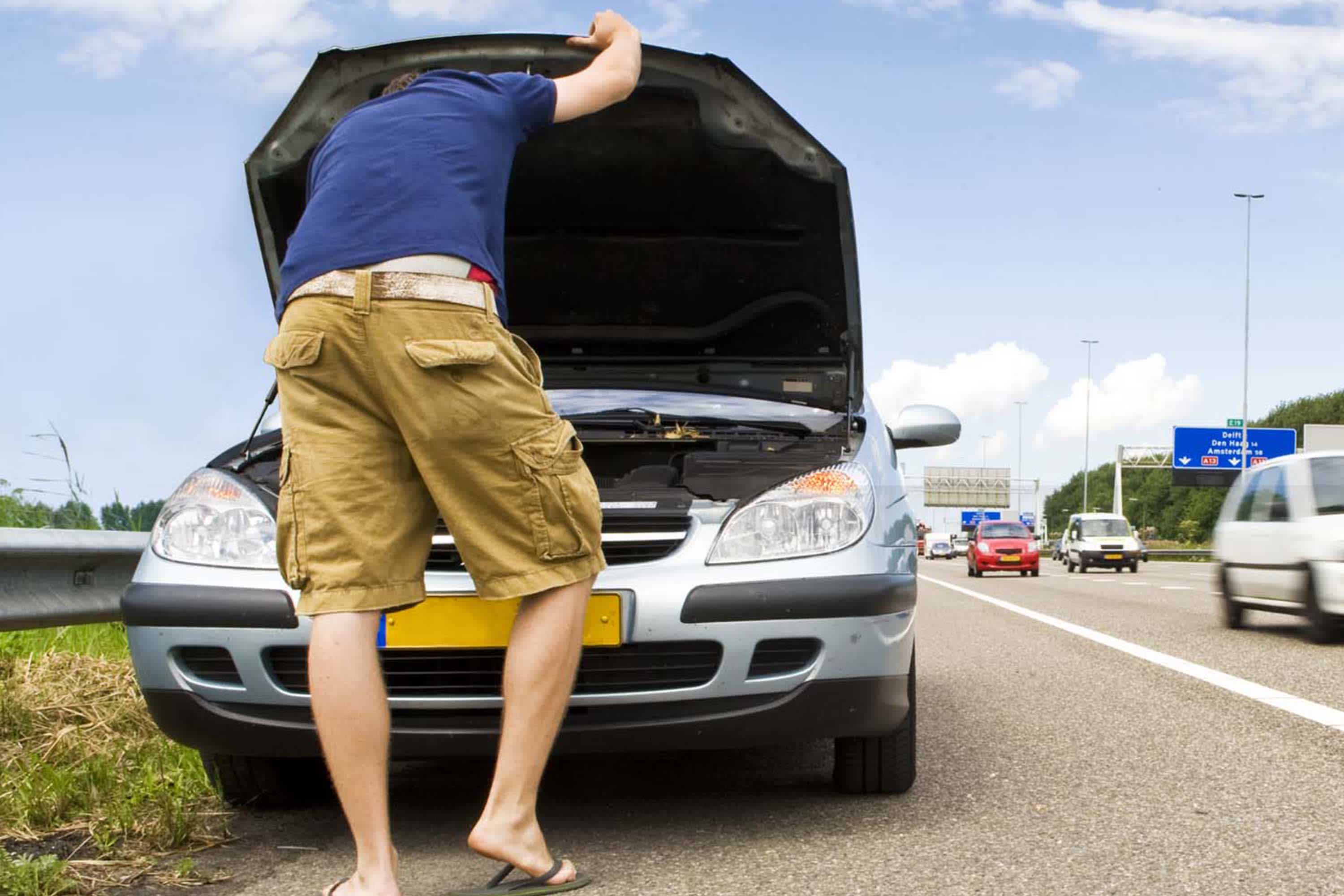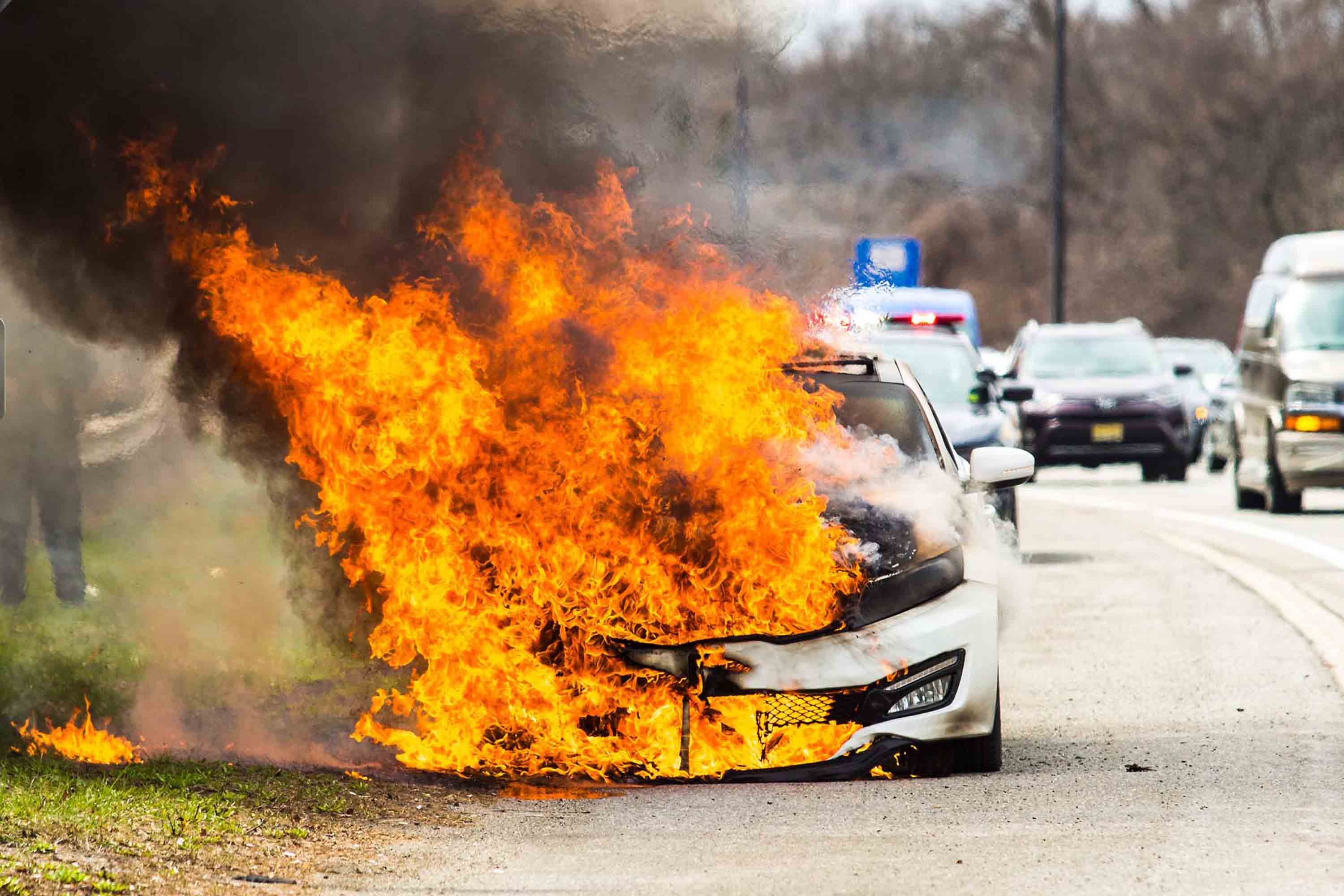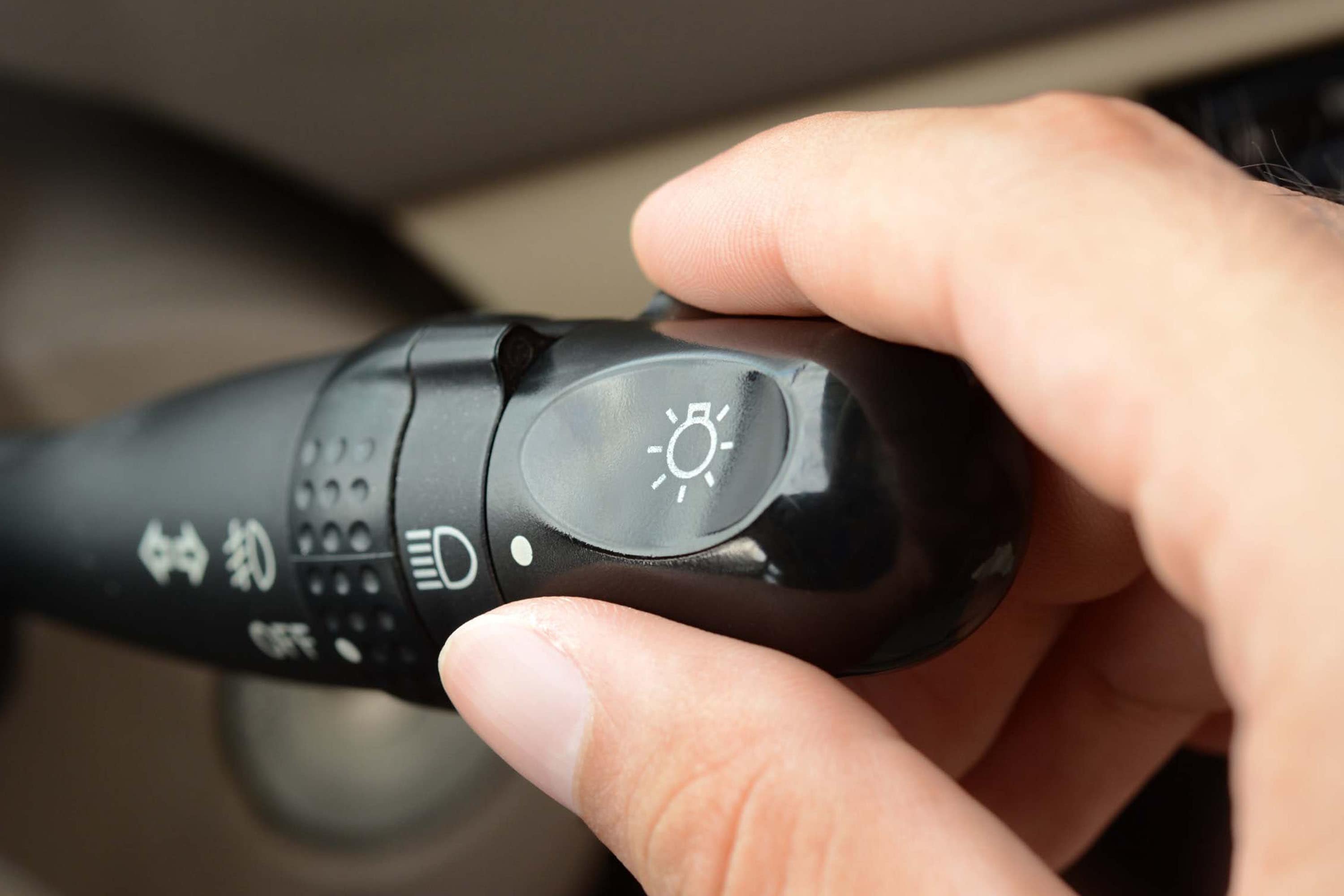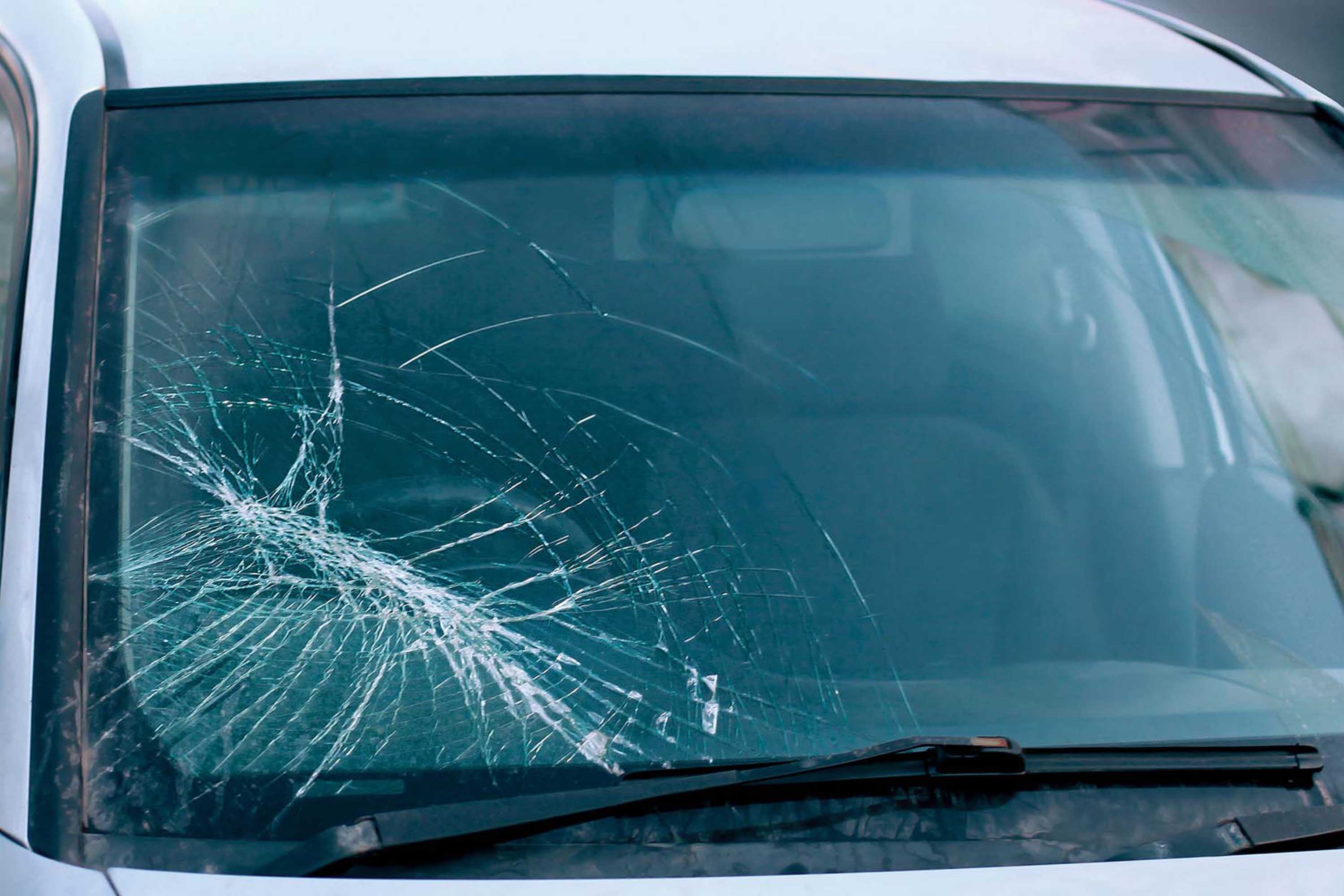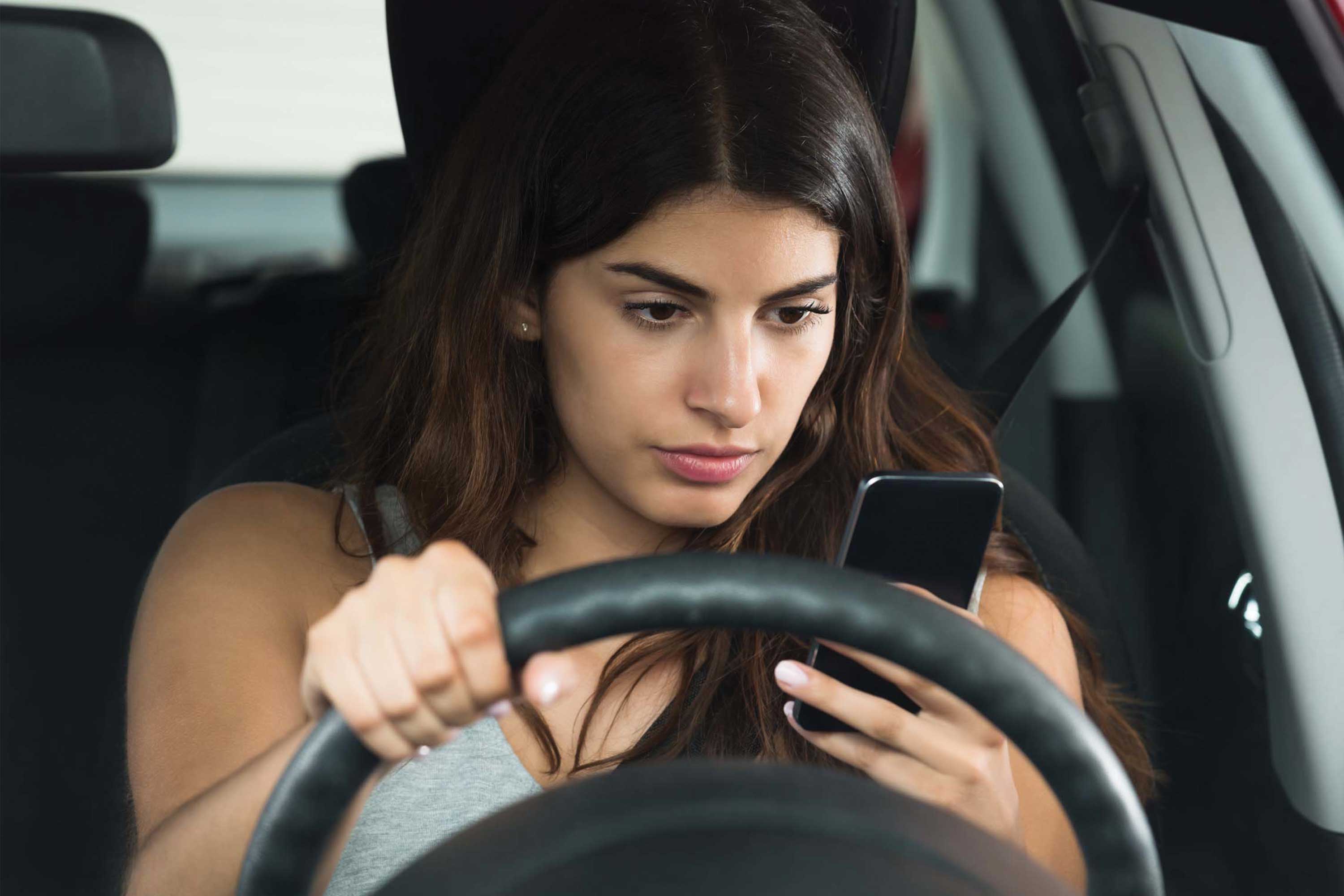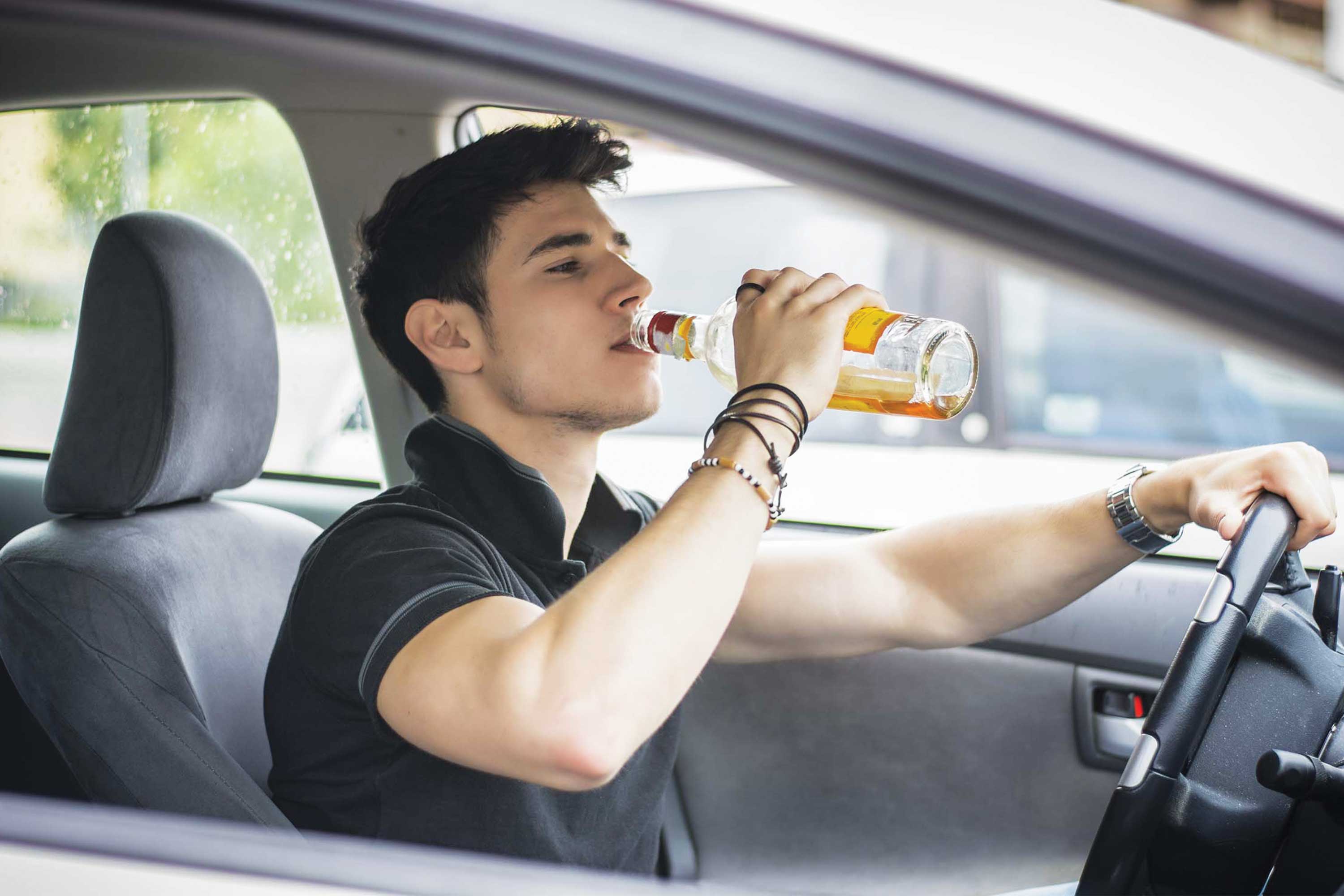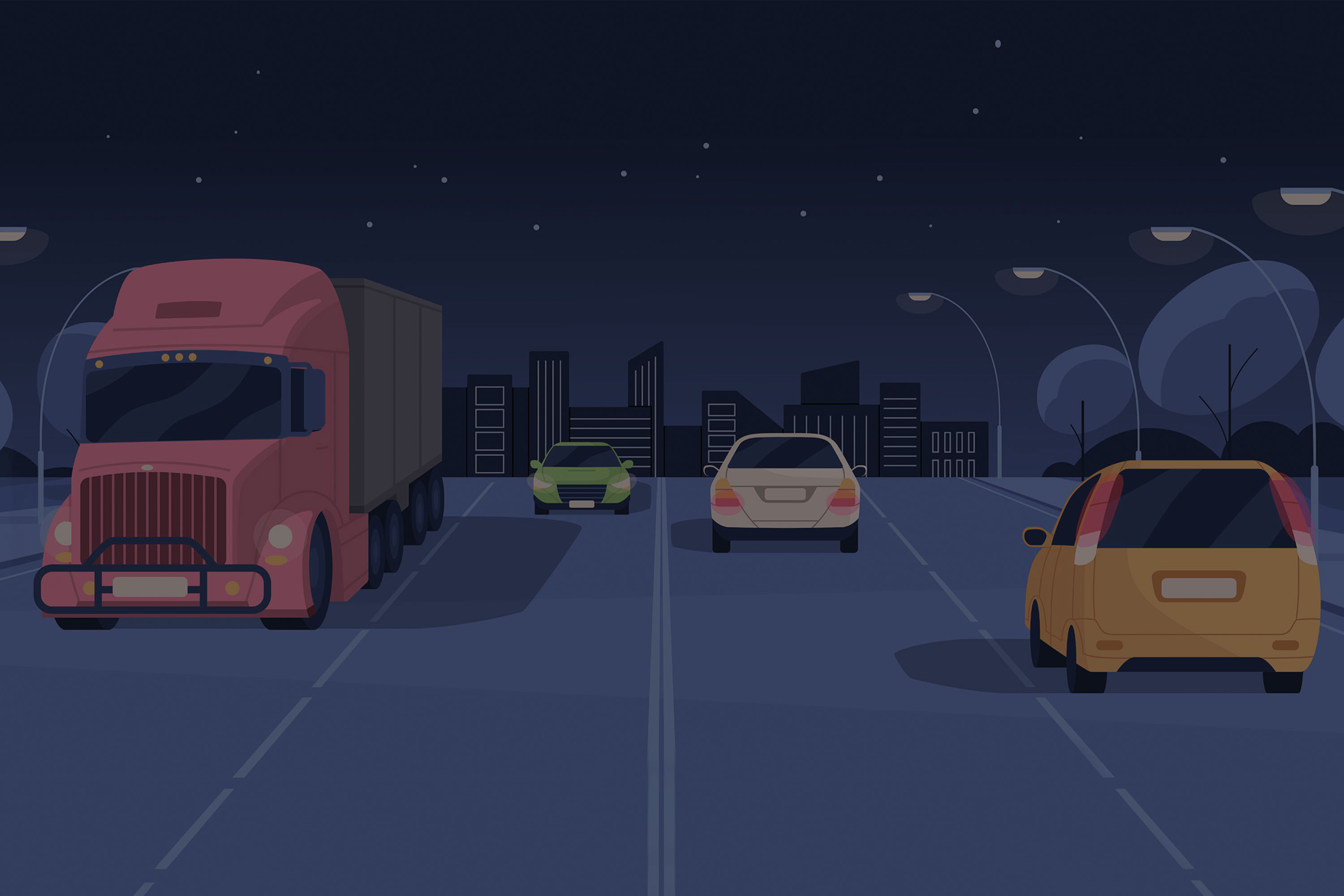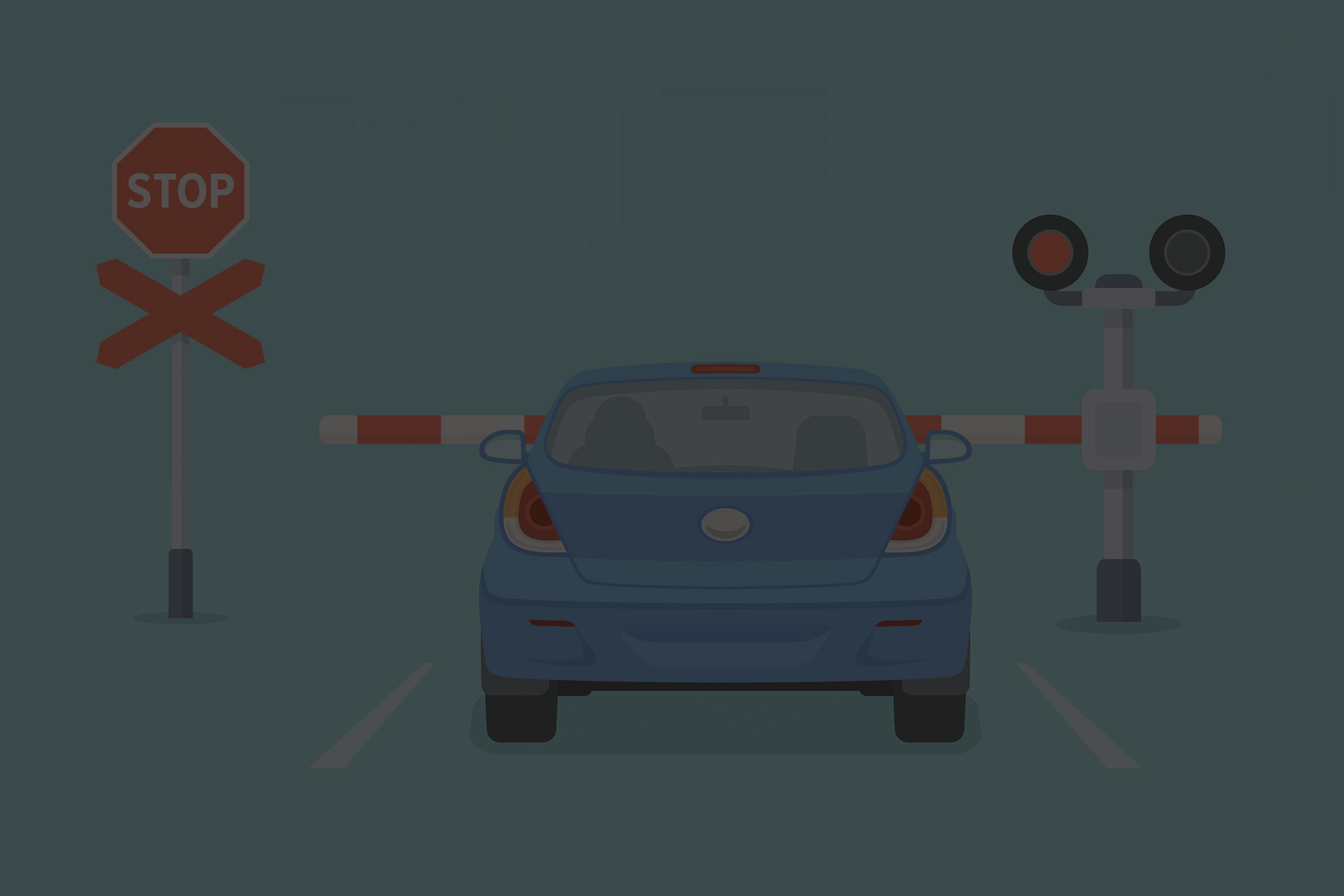Flat Tire or Tire Blowout
It doesn't take an automotive expert to know that a flat or blown tire can ruin your trip. Fortunately, inspecting your tires regularly can help you avoid getting stuck on the road due to these problems. Check out our tire inspection guide for more information on how to check your tire's tread and pressure.
Although tire inspection can reduce the risk of a blown or flat tire, these issues can still happen.
For example, road hazards can puncture your tires and weaken them. You might hear a loud noise once one of your tires bursts, which is one of the reasons why some drivers panic when their tire suddenly blows in the middle of the freeway.
What should you do if your tire suddenly blows out?
- Stay calm and don't panic.
- Keep your focus on the road because your vehicle will tend to steer to one side.
- Push the accelerator pedal briefly and drive straight ahead to regain your focus.
- Let your car slow down.
- Pull onto the shoulder and park your car in a safe spot.
- Change your blown tire with your spare.
- Call for roadside assistance if you don't have a spare tire or if you think you're dealing with more than just a blown tire.
Jammed or Stuck Accelerator
Yes, it's possible for your vehicle's accelerator to get jammed or stuck. In fact, Toyota recalled around 4 million Toyota and Lexus vehicles in 2009 because of an accelerator or throttle problem. The issue was caused by something as simple as floor mats.
Make sure your accelerator pedal isn't stuck in the driver-side floor mat before driving. Get a new floor mat if you think it's starting to curl up near the pedal.
But what if the throttle gets jammed on its own?
Experts recommend applying the brakes and shifting the vehicle to neutral to slow down your vehicle. Remember to turn on your emergency flashers to warn other drivers.
Do not turn off your engine immediately because it can compromise your steering function and make you lose control of your vehicle. Contact the emergency road service once you're safely parked.
Collision
The best way to avoid collisions is to practice safe driving. However, even if you drive safely, you will never have full control over your surroundings while you're on the road.
For example, other drivers near you can lose control over their vehicle and head straight in your direction. A big truck can spill its cargo and put you in a risky situation.
Although you don't have full control of what happens next, you must stay calm so that you can think and react accordingly.
According to Wisconsin's Motorist Handbook, it's important to maintain a good grip of your steering wheel. Determine whether turning the wheel will help you avoid the collision. If you have to change lanes, make sure that you're ready to keep the vehicle in control.
There have been cases where drivers steer away from an imminent collision only to get into another, so make sure you're aware of your surroundings. Once the dust has settled, make sure you know what you should do in case you get involved in a car accident.
Accidents Involving Wildlife
Aside from the danger of getting hit by other vehicles on the road, there's also the risk of hitting a deer or other forms of wildlife.
Roughly 1.5 million deer-related accidents take place every year, according to the National Highway Traffic Administration (NHTSA). If you're driving close to areas that are home to various wildlife, it's a good idea to learn how to prevent deer-vehicle collisions.
Brake Failure
Bad brakes are among the most common causes of road accidents worldwide. So make sure you replace any faulty brake components right away.
Check your friction brakes, brake lights, and parking brake from time to time. Don't forget to check your brake fluid and brake lines because these parts have a huge impact on brake power. You can review our brake maintenance checklist to learn how to inspect and maintain your vehicle brakes.
What should you do when your brakes fail while driving?
Turn on your emergency flashers, then press the brakes again. Most modern vehicles have dual brake systems, which can give you partial braking power once the backup takes over.
Experts also advise pumping your brakes as fast as you can. This can generate enough pressure to get the brakes working again and stop your vehicle.
If nothing happens, apply your parking brake as hard as you can to slow down your ride immediately. Use your horn to alert other drivers on the road.
Once your ride coasts to a stop, pull over and shut down your engine. Shift the transmission to park and call for help. Do not attempt to drive your vehicle again unless it has already been diagnosed and fixed by a professional.
Contact the emergency road service once you're safely parked.
Engine Stalling
If you've been driving for a long time, stalling isn't a new thing to you. Many engine issues can cause this symptom. You can read this article to know the possible reasons why your vehicle suddenly stalls.
To avoid engine stalling, make sure to follow your vehicle's maintenance schedule and replace any bad engine component right away. Get your vehicle off the road once it stalls, and have it checked right away to avoid accidents in the future.
Vehicle on Fire
If you smell something unusual or see smoke coming out of your engine, pull over immediately and turn off the ignition.
As with any fire emergency, you have to get to a safe distance from your vehicle. Call the fire department to report the situation. If you have a fire extinguisher, you can use it to put out small fires.
Vehicle fires can be extremely dangerous, so don't attempt to do anything unless you're sure you can do it correctly.
Headlight Failure
Although a malfunctioning headlight doesn't seem to be that much of an emergency during the day, it can make it extremely dangerous to drive at night.
To avoid headlight failure, make sure your automotive lights are in their prime condition at all times. Diagnose your headlights and replace them immediately at the first sign of trouble.
But what if it's already too late to prevent it, and you're already stuck on the road during the night?
Experts recommend using other lights, like your hazard or directioning signals, until you can safely pull over or get your vehicle to safety. Call for road service or have your vehicle towed immediately.
Shattered Windshield
This can happen if you're always driving through rough road conditions and terrains. Stones and debris from other vehicles can damage or crack your windshield.
Pull over the side of the road immediately once your windshield breaks. Find something like a blanket or a cloth to cover up vent openings to prevent the glass from falling in the vents.
We then strongly suggest calling a tow service so you can take your ride to an auto repair shop.

